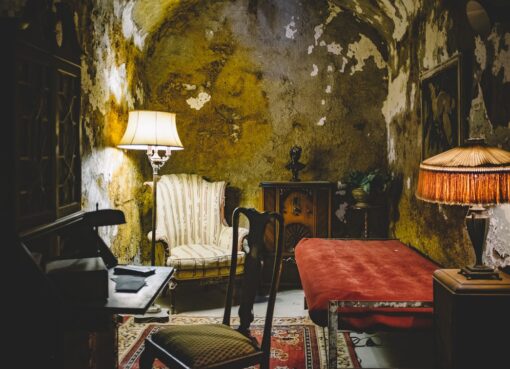Exploring the Allure of China Blue: A Timeless Hue

China blue, also known as cobalt blue, has a rich and storied history that dates back to ancient times. The origins of this vibrant hue can be traced back to the Tang dynasty in China, where it was first produced using cobalt oxide. The distinctive shade of blue quickly gained popularity and became synonymous with Chinese ceramics and porcelain. The production of China blue continued to flourish during the Ming and Qing dynasties, with the color becoming a symbol of wealth and prestige.
The appeal of China blue extended beyond the borders of China, as it became highly sought after in Europe during the 17th and 18th centuries. European artisans were captivated by the intense and luminous quality of the color, leading to the development of their own versions of cobalt blue. This exchange of artistic influence between East and West further solidified the enduring appeal of China blue on a global scale.
In modern times, China blue continues to captivate artists, designers, and consumers alike. Its timeless appeal and rich history make it a beloved hue that transcends cultural boundaries. Whether used in traditional Chinese art or contemporary design, China blue remains a symbol of elegance, sophistication, and enduring beauty.
Key Takeaways
- China Blue has a rich history dating back to ancient times, with its origins in the traditional indigo dyeing techniques of China.
- In Chinese art and tradition, China Blue is deeply symbolic, representing qualities such as purity, harmony, and tranquility.
- The production of China Blue involves intricate techniques such as indigo dyeing, batik, and resist dyeing, which have been passed down through generations as a time-honored craft.
- China Blue continues to influence fashion and design, with its timeless elegance and enduring appeal seen in both traditional and modern creations.
- The global impact of China Blue can be seen in its influence on fashion, art, and design, as it has made its way from East to West and continues to captivate people around the world.
The Symbolism and Cultural Significance of China Blue in Chinese Art and Tradition
In Chinese art and tradition, China blue holds deep cultural significance and symbolism. The color is often associated with the concept of immortality and eternity, as it is believed to represent the heavens and the divine. In traditional Chinese painting, China blue is used to depict landscapes, water, and the sky, evoking a sense of tranquility and harmony with nature.
China blue is also closely linked to the concept of yin and yang in Chinese philosophy, representing the balance between opposing forces. This duality is reflected in the use of China blue in traditional Chinese ceramics, where it is often paired with white to create intricate patterns and designs. The combination of these two colors symbolizes harmony and unity, reflecting the interconnectedness of all things in the natural world.
In Chinese culture, China blue is also associated with prosperity and good fortune. It is often used in traditional clothing, such as the iconic qipao, to symbolize wealth and success. The enduring cultural significance of China blue in Chinese art and tradition has cemented its status as a timeless symbol of beauty, harmony, and auspiciousness.
The Production and Techniques of Creating China Blue: A Time-Honored Craft
The production of China blue is a time-honored craft that requires skill, precision, and a deep understanding of traditional techniques. The process begins with the sourcing of cobalt oxide, which is ground into a fine powder and mixed with water to create a pigment. This pigment is then applied to ceramic or porcelain surfaces before firing in a kiln at high temperatures.
One of the most iconic techniques used in creating China blue is underglaze painting, where the pigment is applied directly onto the surface of the ceramic or porcelain before glazing. This allows the vibrant blue color to shine through the transparent glaze, creating a luminous and ethereal effect. Another technique, known as overglaze painting, involves applying the pigment on top of the glaze before firing for a more intricate and detailed finish.
The production of China blue requires a meticulous attention to detail and a deep understanding of the chemical reactions that occur during firing. Master artisans who specialize in this craft often spend years honing their skills and perfecting their techniques, ensuring that each piece reflects the timeless beauty and elegance of China blue.
China Blue in Fashion and Design: Its Enduring Influence and Timeless Elegance
| Aspect | Details |
|---|---|
| Origin | China |
| Influence | Fashion and Design |
| Characteristics | Enduring Influence and Timeless Elegance |
The influence of China blue extends beyond traditional art and ceramics, making its mark in the world of fashion and design. The timeless elegance and versatility of this hue have made it a popular choice for designers seeking to evoke a sense of sophistication and refinement in their creations. From haute couture to ready-to-wear collections, China blue has been embraced by fashion houses around the world for its ability to convey a sense of timeless allure.
In interior design, China blue is often used to create a sense of tranquility and serenity, evoking the peaceful landscapes depicted in traditional Chinese paintings. Whether used as an accent color or as the main focus of a room, China blue adds a touch of timeless elegance to any space. Its ability to complement a wide range of styles, from traditional to contemporary, makes it a versatile choice for designers looking to create a sense of timeless sophistication.
In the world of graphic design, China blue is often used to convey a sense of calm and tranquility, making it a popular choice for branding and packaging. Its association with tradition and elegance makes it an ideal choice for luxury brands seeking to convey a sense of timeless sophistication and refinement.
Exploring the Global Impact of China Blue: From East to West
The global impact of China blue can be seen in its widespread influence on art, culture, and design around the world. From its origins in ancient China to its adoption by European artisans during the 17th and 18th centuries, China blue has transcended cultural boundaries to become a beloved hue with universal appeal.
In Europe, China blue became synonymous with luxury and refinement during the 18th century, as it was used to decorate fine porcelain and ceramics imported from China. This exchange of artistic influence between East and West led to the development of European versions of cobalt blue, further solidifying its status as a global symbol of elegance and sophistication.
In modern times, China blue continues to captivate artists, designers, and consumers around the world. Its enduring appeal can be seen in its widespread use in fashion, interior design, graphic design, and fine art. Whether used in traditional Chinese ceramics or contemporary design, China blue remains a timeless hue that transcends cultural boundaries.
The Contemporary Resurgence of China Blue: Reviving a Classic Hue in Modern Times

In recent years, there has been a resurgence of interest in China blue as designers and consumers seek to embrace classic hues with timeless appeal. This revival has been driven by a desire to reconnect with traditional craftsmanship and heritage, as well as a growing appreciation for the enduring beauty of this iconic color.
Contemporary designers have been incorporating China blue into their collections as a way to pay homage to traditional Chinese art and culture while infusing their creations with a sense of timeless elegance. This revival has also been fueled by a growing interest in sustainable and ethically sourced materials, as China blue is often associated with traditional craftsmanship and artisanal techniques.
Consumers have also been drawn to the timeless allure of China blue, seeking out products that reflect a sense of history and tradition. From home decor to fashion accessories, there has been a growing demand for products that feature this iconic hue, reflecting a desire to embrace classic colors with enduring appeal.
Embracing the Allure of China Blue: Incorporating the Timeless Hue into Everyday Life
As China blue experiences a contemporary resurgence, more people are seeking ways to incorporate this timeless hue into their everyday lives. Whether through fashion, home decor, or art, there are countless ways to embrace the allure of China blue and infuse everyday life with a sense of timeless elegance.
In fashion, China blue can be incorporated into wardrobe staples such as dresses, blouses, and accessories to add a touch of sophistication and refinement. Its ability to complement a wide range of skin tones makes it a versatile choice for those looking to elevate their everyday style with a classic hue.
In home decor, China blue can be used to create serene and tranquil spaces that evoke the peaceful landscapes depicted in traditional Chinese paintings. Whether through textiles, wall coverings, or decorative accents, incorporating this iconic hue into interior design can add a sense of timeless elegance to any space.
In art and design, China blue can be used to create striking visual compositions that evoke a sense of tradition and heritage. Whether through painting, sculpture, or graphic design, incorporating this iconic hue into artistic creations can add depth and meaning to the work while paying homage to its rich cultural significance.
In conclusion, the history, symbolism, production techniques, global impact, contemporary resurgence, and everyday appeal of China blue all contribute to its enduring allure as a timeless hue with universal appeal. Whether used in traditional Chinese art or contemporary design, China blue continues to captivate artists, designers, and consumers around the world with its timeless elegance and rich cultural significance. As we continue to embrace classic colors with enduring appeal, there is no doubt that China blue will remain an iconic hue that transcends cultural boundaries for generations to come.
If you’re interested in learning more about the fashion industry in China, you should check out this article on Copy Collection. It provides insight into the impact of fast fashion on Chinese garment workers and the environmental consequences of the industry’s rapid growth. This article will give you a deeper understanding of the issues raised in the documentary “China Blue” and the broader implications of globalized fashion production.
FAQs
What is the documentary “China Blue” about?
The documentary “China Blue” is about the life of a young Chinese factory worker named Jasmine and her experiences working in a blue jeans factory in southern China.
When was “China Blue” released?
“China Blue” was released in 2005.
Who directed “China Blue”?
“China Blue” was directed by Micha X. Peled.
What are some of the themes explored in “China Blue”?
“China Blue” explores themes such as globalization, labor rights, and the impact of consumerism on workers in developing countries.
Where was “China Blue” filmed?
“China Blue” was filmed in the city of Shaxi in Guangdong province, China.
What impact did “China Blue” have on the fashion industry?
“China Blue” shed light on the working conditions in garment factories in China and sparked discussions about ethical sourcing and labor practices in the fashion industry.
Leave a Reply
You must be logged in to post a comment.



Leave a Comment